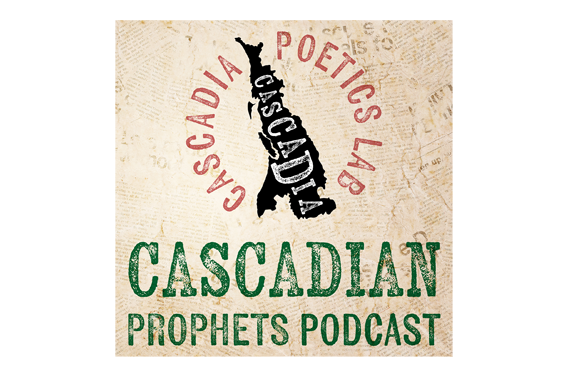2013 Postcard Afterword
2013 was the 7th year of the Poetry Postcard Fest overall and the 2nd year that Brendan McBreen would be in charge of organizing and distributing the list. A call went out on June 22 and I did not respond right away and found myself at 52 on the list. There would eventually be 302 around the world and the fest itself is briefly summarized here on the official August POetry POstcard blog.
This post is about my own writing and experience of the festival. I got the “beta” list on June 16 and went to work on the next day. I started using epigraphs from the Copper Canyon Press anthology Reversible Monuments, a collection of contemporary Mexican poets and, specifically (at first) Maria Baranda.
I had already written about my process for composing postcard poems (linked here) and that method was even more entrenched during this summer. Sometimes my wife Meredith would be awake as I finished my morning poem and one morning she got a kick out of the line in #430 (Emperor of Wind) which listed 3 examples of the mundane as: “blogs, ginger snaps and capitalism.” The fact that money’s tight also was a factor in some of the poems this month, as evidenced by the ending of that poem. (Linked above from graphic.)
Maria Baranda was holding steady as a source for daily epigraphs when the subject matter started to reflect other rituals, including dancing with Ella (age 17 months) in the kitchen after breakfast. The notion in #431 (Wide Horizons) was an answer to the somewhat voluntary simplicity we have been experiencing over the last year or so and that being (among other impulses) wanting to spend more time with our little girl. But once expressed, this became near the top of my consciousness for a few days and that is reflected in the next few poems, but a new element is introduced as well and that is the p-patch.
This is a uniquely Seattle term for community gardens, apparently named after the Picardo Farm in the Wedgwood neighborhood, which became the first community garden in Seattle. The notion that we have a volunteer in our p-patch whose job is to get on the case of p-patchers who are not taking care of their patches showed up in #432, Buttercup Mambo. I had chosen the word Mambo intuitively, but a little research on that term was reflected in #433, What’s Left Mambo which also had a 3D card which did not scan so well. Mer wondered why I would mail such a cool card and not save it for myself, but so be it. It would be nice to hear that these cards actually arrived somewhere, but I almost never hear.

433. Barbara Barg, Chicago, IL – What’s Left Mambo (3d scan of Crater Lake postcard not quite like having the card in your hands)
It is an interesting dynamic to see what surprises are in store when you write in this manner, a composition process which has been described in many ways, projective, organic, the practice of outside, dictation,&c. There are some who still yet do not understand the notion of writing this way, include one participant who is posting their original cards on their blog with the “new and improved” version after editing. Sure, when I go over postcards I have written, I see a spot where I could have written something that maybe added melopoeia without detracting from content or rhythm, but there is something courageous in taking a trip into the unknown and letting the language have its say. That I would intuitively choose a word like mambo would reflect part of my Cuban heritage. Only later would I find that the word is a Kikongo word for “conversations with the Gods” as postcard poems #433 points out. These are the kinds of surprise available to those who write in this manner. The poem had brighter thoughts than the poet writing it!
I loved seeing, during my intensive re-reading of Blaser’s essay The Practice of Outside that Blaser understood that found text was part of that practice. (My essay about my re-reading of Blaser’s essay is linked here.) The exact quote of Blaser’s is: “words found or discovered in a book are one level of a dictation.”
And by this time, (July 27) I’d written ten cards and the instructions for the fest were suggesting to send at least three cards. This guideline was instituted so that participants might receive some cards to which they could respond on August 1. So, I figured that if they got mine early, that would only ensure that they would get a poem by August 1. Except in the case of the poem sent to Mel Functioning, I am guessing that was true.
And then the only major event during the fest, with the exception of something rumored to happen but as of this writing not yet materializing (war on Syria) was the death of musician/composer J.J. Cale. (I was done with my postcards by the time Seamus Heaney died on August 30, but am not sure if I would have been inspired by that event anyway.) You know writers usually get the short end of the stick in Western society. Those that twerk get the 15 minutes. Those that capture the essence of their era, as Cale did in so many songs, don’t get the same attention. I suspect J.J. preferred it that way, but that he died during the August Poetry Postcard Fest means he has a place up there with Max Roach and the collapse of the I-35 bridge in Minneapolis, other notable August events in the past seven years. I was able to find one last Maria Baranda quote for the season and used it for J.J. R.I.P. Brother.
I would move ahead in Reversible Monuments to Alberto Blanco for three epigraphs and then move on to The Whole Island, Mark Weiss’ document of six decades of Cuban poetry, including Eugenio Florit and then Jose Lezama Lima, who would provide a great deal of quotes and inspiration. Lezama Lima is one of the pre-eminent practitioners of the Neo-Barroco school of poetry. I have written before that this school should have been included in the seminal anthology The New American Poetry but what can you do but be a poetry version of a Monday Morning Quarterback? Still, my take on the Neo-Barroco is linked here.
And these poems get us to about halfway into the fest. Still to be chronicled in verse was the visit of El Habib Louai in mid-August, my Seattle tour guide efforts and our visit to Desolation Peak. I will post these poems at a future date. I have to say that hosting Habib, trying to show him the best of this country and being his guide to our part of Cascadia was a real highlight of the month for me.
I am not sure if it was in poem 446 when phrases or images from Hua-yen Buddhism’s Flower Ornament Scripture, but there is a reference there and a card to match that theme.
In postcard #450, I tried a technique I had been threatening to do for a while and that is a postcard erasure. My method was to have at least one word per line from the original card showing and no more than two. That the card and the content was about the movie Into Great Silence fit with the meditation/spirituality theme that was gaining traction before Habib’s visit, but it was fun to send out and, as David Byrne would sing: “Hope for an answer some day.”
The Habib cards started coming with #452 and the one written onto a wooden postcard was another rare instance of card being reflected in content quite intentionally. That the epigraph fits in as well made it all the more satisfying, but rare that content, quote and card would be so unified.
I could have stopped after Habib’s visit, as I had done my requisite 31 cards, but I soldiered on, sending cards to folks on the list to whom I wanted to address and not follow the list down past the 31st name below mine. The themes already expressed were bobbing back to the surface of my consciousness as the month rolled on. I go back to Nate Mackey’s thoughts about how in the serial poem from our August 2012 interview, published this past year in Amerarcana: A Bird & Beckett Review:
I wanted there to be the possibility of things coming into the poem that were not necessarily resolved in that poem, that were not necessarily pursued to their fullest or most exhaustive sense in the poem. I wanted things to come into the poem that would have a life beyond that particular poem and that would become part of an exploration that I’d be involved in in my writing. The appeal of the serial poem is that it allows that. It’s not so much a matter of it’s there and it’s done, but that again and again, again and again, again and again, you come back to certain concerns, certain motifs, certain figures. In a sense, there’s the freedom of not feeling that one has been definitive, that one has closed things up, that one has shut the door on further exploration.
I would use other poets for my epigraphs and settled into Michael McClure’s Touching The Edge, Dharma Devotions from the Hummingbird Sangha. Maybe it was because of a new open mic happening in the neighborhood at the Hummingbird Saloon. Certainly that there are actual hummingbirds whose presence grace our p-patch is another possibility. When we spot them it is a moment to savor.
I finally kicked out the last four poems in one sitting, (44 for the month, though I originally thought 42) having tried to get at least two more done after that to others on the list who shall remain nameless. And this post says nothing of all the cards I received during the month which, at this writing, is a record 27. More, I have a feeling, are to come as my last batch are probably settling into mailboxes around North America. And then arrives the sweet melancholy Labor Day weekend invokes, as we try to stretch out the last of our summer while the days grow noticeably shorter and the baby learns new dance moves. But I love the journal/documentary nature of every August and am grateful to Lana Ayers who helped make the fest what it is and Brendan McBreen for being the new keeper of the list.
The 2013 fest was a stunning success for me in every way. I am not sure the satisfaction of 2013 could ever be replicated, but I am willing to try next year.




















































0 Comments